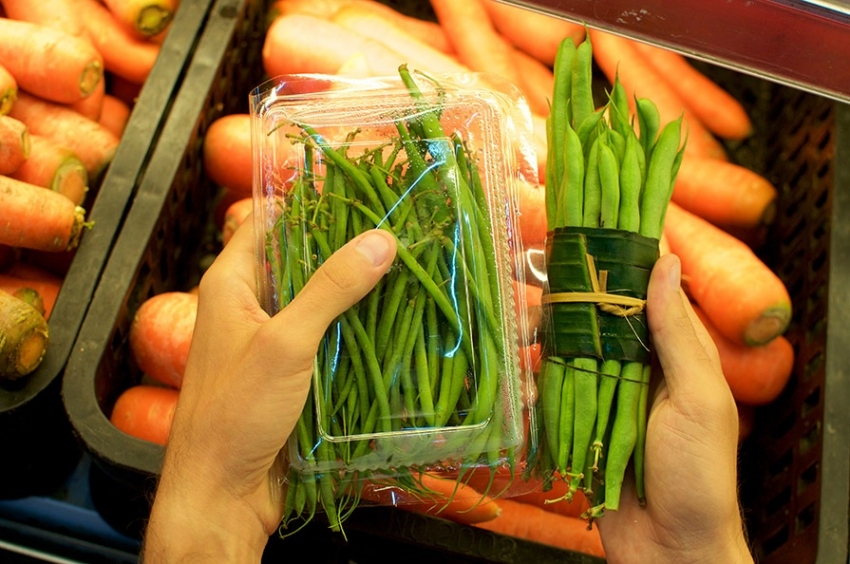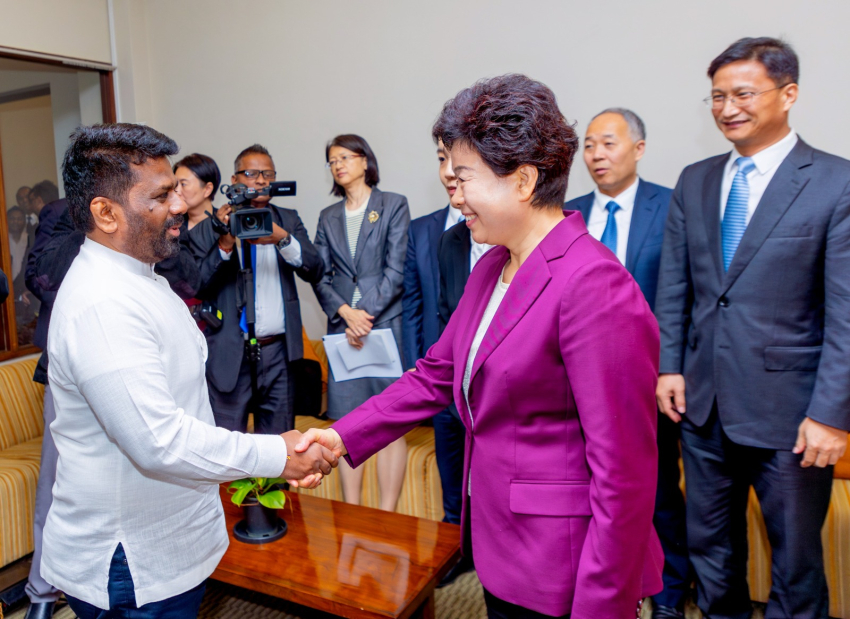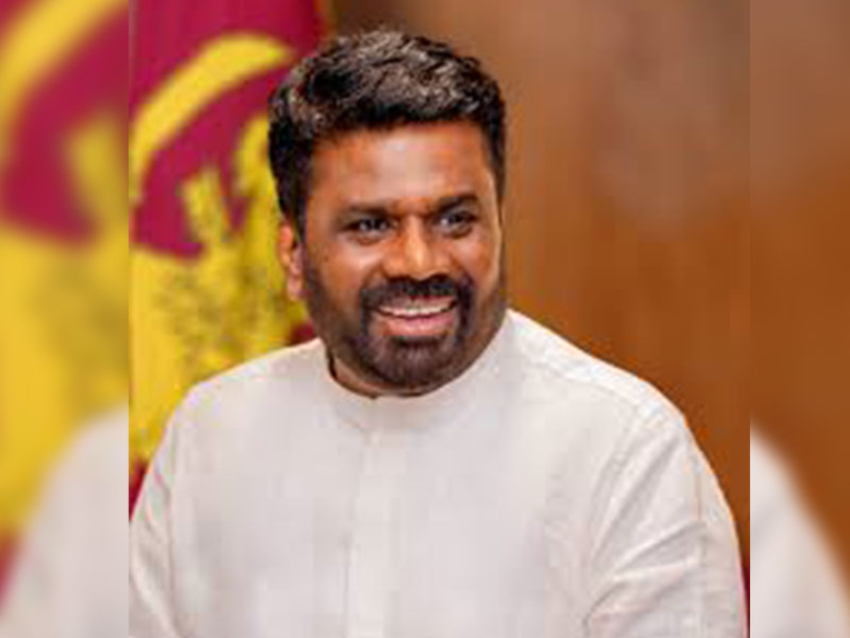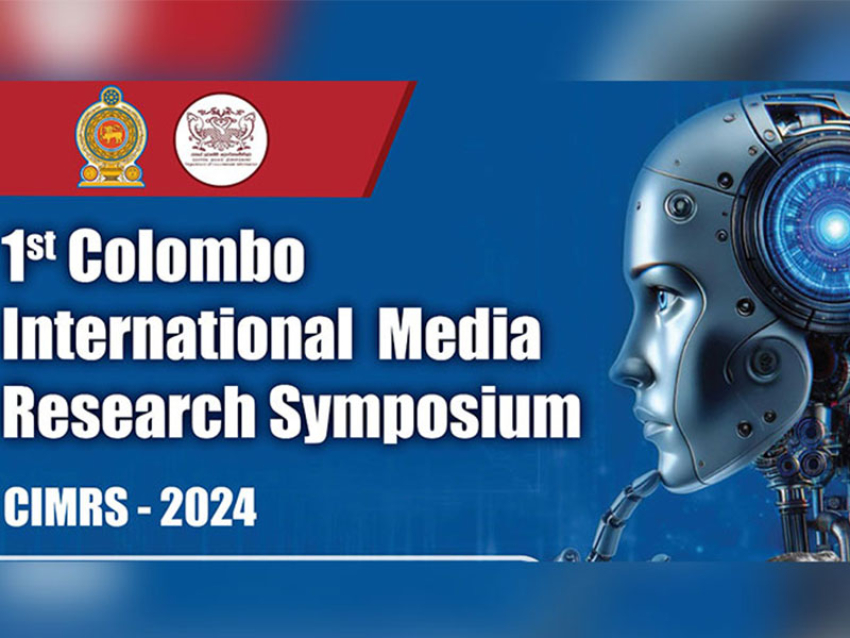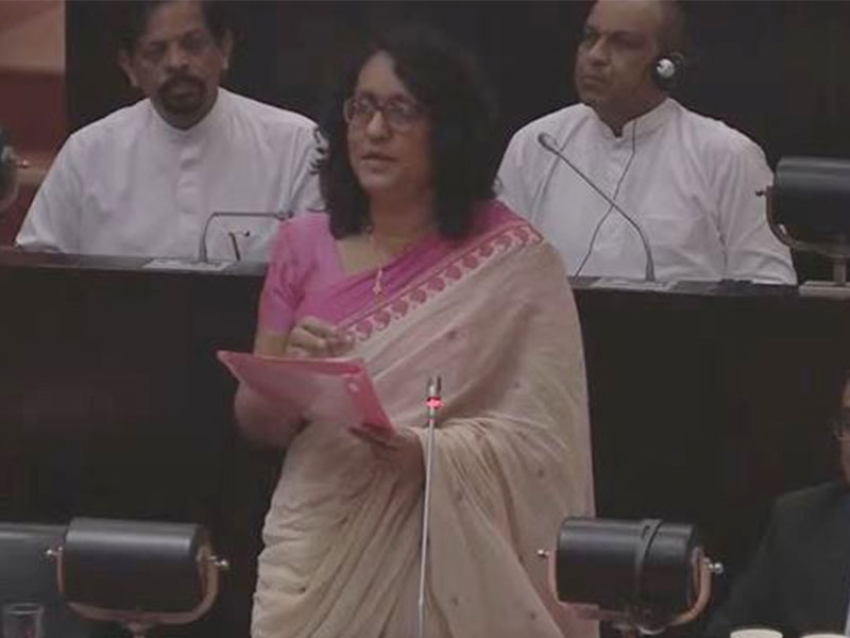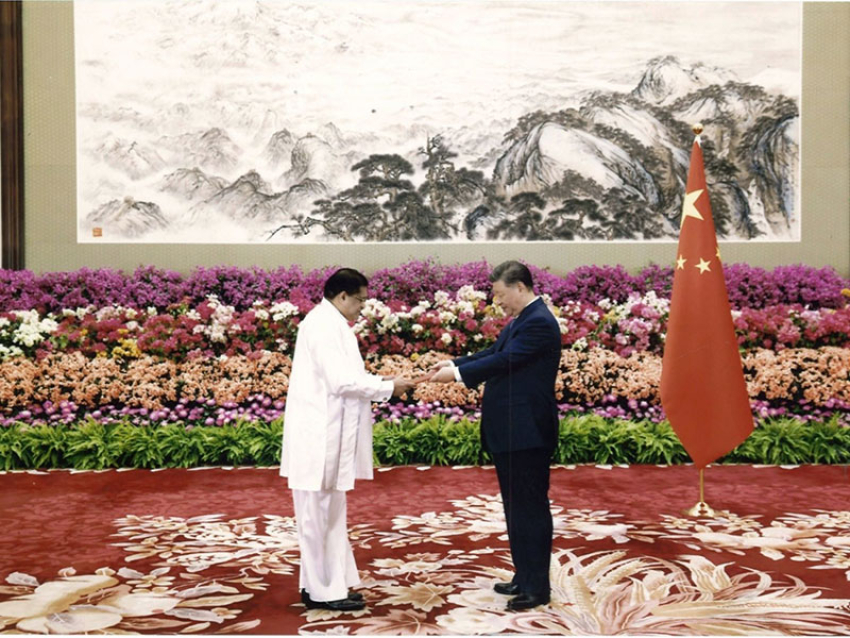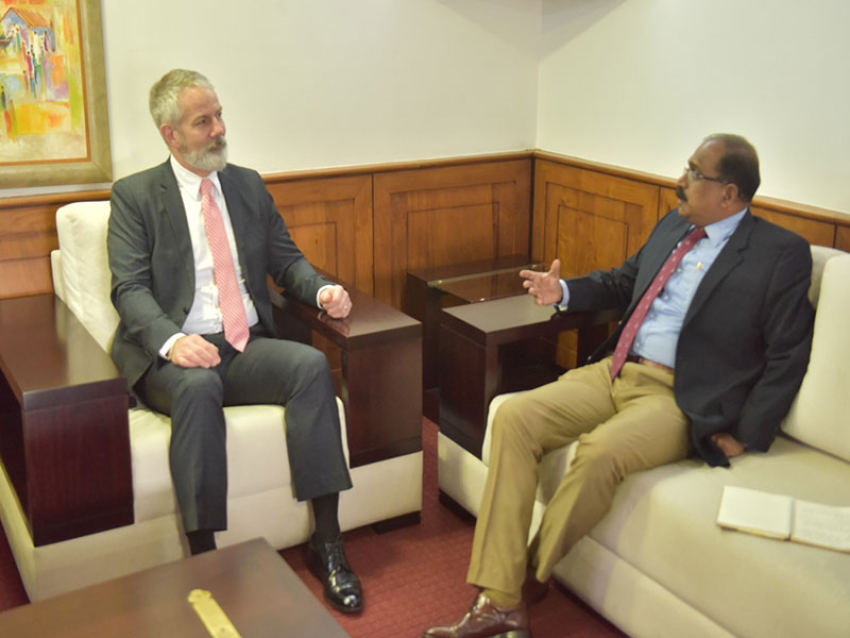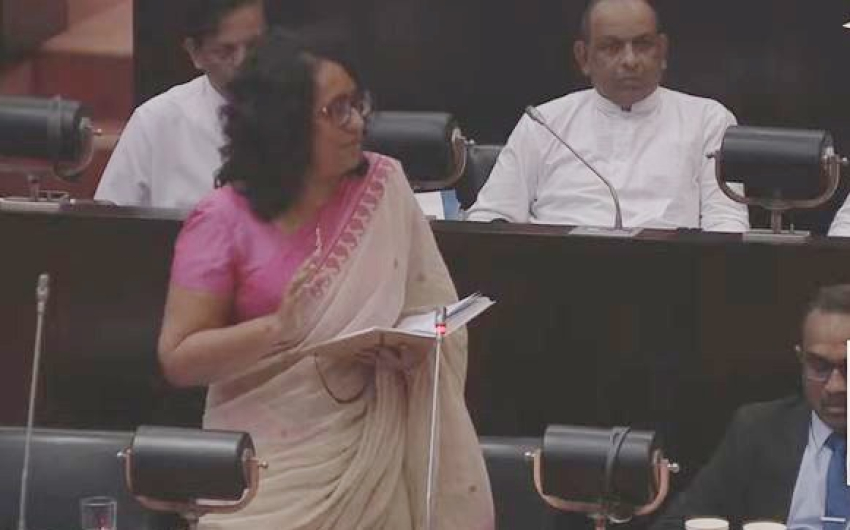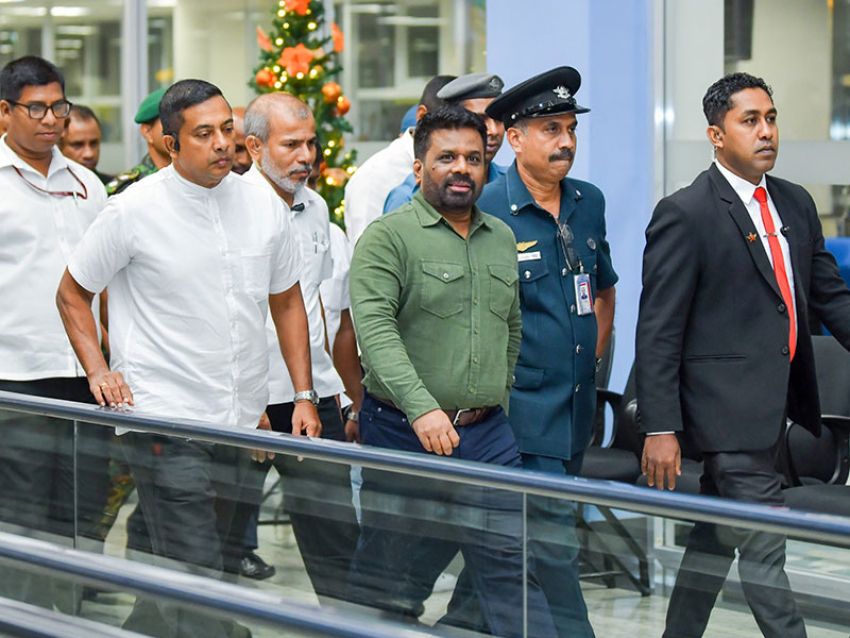The word ‘plastic’ is ringing in society’s ears. It seems we hear non-stop about single-use plastics in our everyday lives, and we’re taking action: people are eschewing disposable coffee cups, refusing plastic straws and calling out supermarkets for wrapping produce in the stuff. But when you look at the plastic-wrapped tomatoes on a supermarket shelf, what you may fail to see is the plastic that was used to produce the food in the first place. What if the plastic problem goes back much further?
Plastic is omnipresent on farms. It is used to wrap silage, to cover crops, in tubing for irrigation and to transport feed and fertiliser. According to a 2010 report from the Department for Environment, Food and Rural Affairs (Defra), 45,000 tonnes of agricultural plastics are produced every year in the UK.
The biggest contributor to this problem, making up over 40% of the total agri-plastic market, are plastic sheets that are spread over the soil to serve as a sort of plastic mulch. They suppress the growth of weeds, increase fertiliser uptake, regulate temperature and humidity, and protect plants and soil from bad weather. Researchers estimate that plastic mulch increases crop yields by a third. The innovation was heralded as an agricultural boon when it was first introduced in the 1950s, and in 2019 global plastic film use on farms was expected to reach 6.7 million tonnes – almost 2% of all the plastic produced each year. Using plastic to grow crops even has its own terminology: plasticulture.
Plastic Mulch
But the widespread use of plastic mulch poses a problem. Plastic used on farms is typically difficult and expensive to recycle because it becomes contaminated with soil, pesticides and fertiliser. These contaminants can amount to up to 50% of the total weight of the material collected for recycling, making the process costly and inefficient. If agri-plastic can’t be recycled, the only options for disposing of it are to burn it, bury it, or to send it to landfill.
Marcus Flury, a professor of soil science at Washington State University, says he is worried about the effect the plastic mulch is having on the environment. For all the benefits plastic mulch brings, it also alters the soil in harmful ways. Research has shown that the thinner the film, the more difficult it is to remove without leaving microplastics in the soil, where they can remain for decades. Microplastics can negatively affect soil quality, and could harm the microbes and tiny organisms that call the soil home.
Researchers do not yet fully understand the long-term effects all this plastic is having on soils, and, by extension, the food we eat. Studies have begun to show that microplastics are making their way into the human food chain, and into our bodies, but exactly where those plastics come from and how they affect our health is still to be determined.
Flury believes that swapping out plastic mulch for a biodegradable alternative may be our best bet: it wouldn’t have to be removed, and could simply be tilled into the soil at the end of the season. There is already an EU standard for biodegradability of plastic mulch, so farmers can be reassured that the plastic will actually break down after use. But there are still questions over the impact of these mulches on the soil itself. “That’s something that we are still researching at the moment,” he says.
This green swap also comes at a cost that many farmers cannot afford. At the moment, biodegradable plastic is about three times more expensive than its polyethylene equivalent in the US, according to Flury.
Green Beens
Biodegradable plastic isn’t the only option for farmers wanting to cut down.
Most crops begin their lives in tiny plastic trays and pots. But for decades, farmers in Japan have been using pots made from paper. Rather than removing each seedling from its respective pot to plant out in the field, paper pots are arranged in a chain and fed through a machine that transplants that chain to the ground, turning hours of work into mere minutes. The practice, which is not only time-efficient, but more eco-friendly because the paper is biodegradable, is finally being adopted elsewhere – a company called Small Farm Works imports the system in Wisconsin in the US, for example.
Until biodegradable replacements are widely available, recycling any plastic used is likely to be better than the alternative.
Burning plastic is still a fairly common practice on farms across the globe, despite it releasing harmful pollutants, known as dioxins, into the air.
But plastics recycling isn’t always easily available to farmers. In Wales in 2019, where burning plastic farm waste has been banned since 2005, farmers said they were left with few options when the only company that had been dedicated to collecting plastic from farms for recycling had to suspend its services when new fees charged by recycling plants made the business no longer financially viable.
Silage Plastic
Now two new schemes hope to improve the situation. A group of the UK’s farm plastic collectors have banded together to form a new recycling collection scheme for agricultural plastics, called the UK Farm Plastic Responsibility Scheme (UKFPRS), that will launch in January 2020. Mark Webb, who runs Farm XS, a recycling firm that is a member of UKFPRS, says the scheme will operate on a not-for-profit basis meaning farmers can give away their plastic for recycling at no additional cost. The scheme also hopes to educate farmers about how to reduce contamination in their waste plastic, and provide a better estimate of how much farm plastic is really being collected and recycled.
The announcement of UKFPRS came shortly after a similar scheme for collecting plastic films from farms, called Agriculture, Plastic & Environment UK (Ape UK), was launched in October last year. The Ape UK programme will be funded by charging farmers levies on the plastics they purchase.
Still, Flury says that switching to biodegradables – not recycling – is the way to solve farming’s biggest plastic problem: “It’s a very simple solution, in my opinion: just make the non-biodegradable plastic more expensive.” Or even better, he says: ban it altogether.
Even Webb doesn’t see recycling as a long term solution. “The overriding problem which affects the UK situation… is that we simply do not have facilities or the capacity for recycling the material,” he says. In an ideal world he’d like to see farmers reduce their reliance on plastic altogether.
Milk Bottles
That’s exactly what Bryce Cunningham, a farmer in Ayrshire, Scotland, is striving for: his goal is to own the UK's first single-use plastic-free dairy farm.
After raising more than £10,000 ($13,100) through crowdfunding, he has replaced the single-use plastic cartons he previously sold his milk in with 32,000 glass bottles for which customers pay a 20p ($0.26) deposit, harking back to a more old-fashioned milk distribution method. He is also looking to switch to using biodegradable silage wrap, only using refillable chemical containers, and getting bulk feed in reusable bags.
What’s more, he says it seems like other farmers are beginning to follow his lead: “Not a week goes by where I don’t have a farmer on the phone asking how we’re getting on or wanting to visit the farm to see what we’re doing.”
While plastic use is not the only – or even the most pressing – environmental issue in agriculture today, it’s something that many farmers could address without dramatic changes to how they work. Cunningham hopes spreading his newfound expertise will encourage others to take the same steps to reduce plastic on their own farms. “I fully believe there is a lot more we can do,” he says.
This article is part of Follow the Food, a series investigating how agriculture is responding to environmental challenges. Follow the Food traces emerging answers to these problems – both high-tech and low-tech, local and global – from farmers, growers and researchers across six continents.
Image credits: Getty Images
share
YOU'RE READING
How to fix our
broken food system
share
SIMILAR ARTICLES
Five ways we can feed the world in 2050
How farming can help to heal nature
Why food's plastic problem is bigger than we realise
By JJ Ramberg
Can we feed 10 billion people without destroying the environment?
I’d never spent much time thinking about chickpeas.
That is, until I met Doug Cook, director of the Chickpea Innovation Lab at the University of California, Davis. Cook and his research team spent years hiking throughout south-east Turkey in search of wild chickpea plants. Using GPS data and information from local shepherds and village chiefs, Cook’s team collected more than 2,000 individual strains.
Some have more protein than the varieties that we are used to eating. Some are better at withstanding drought. Some aren’t bothered by certain pests. And when you start cross breeding them, the variations are endless. The goal is to find the genetics underlying some of the most useful qualities of these strains. The result could be chickpeas with improved resilience to climate change and pests, with higher nutrient levels.
Since chickpeas are a primary source of protein in several countries that contain 20% of the world’s population, the implications of Cook’s discoveries for feeding our growing population could be huge.
My foray into the world of chickpeas was just one part of a much wider investigation for the new BBC World News and BBC Future series, Follow the Food. I have been travelling around the world discovering how farmers, scientists and engineers hope to improve the efficiency and sustainability of our food.
Cooking
It’s something that most of us who aren’t intimately involved with food production and distribution – particularly in the developed world – don’t think much about. I live in Brooklyn, New York. Though I consider my family to be food-conscious – we try and buy locally produced food as much as possible, compost our scraps and eat the majority of our leftovers to reduce waste – the true issues encountered with feeding the world don’t affect us much day to day.
When I need to buy something to eat, I can go to any of the seven markets (and countless restaurants) within a four-block radius of my home and there’s almost nothing I can’t find. I can get watermelon and peaches in the middle of a blizzard in January.
At the rate we are going, the world may no longer have any usable topsoil within 60 years.
Let’s step out of this bubble for a moment. The food system that makes this choice possible has become vastly unsustainable. It has led to the progressive destruction of topsoil – essential for growing crops – in many parts of the world. Some experts believe that at the rate we are going, the world will no longer have any usable topsoil within 60 years. Food production today also relies on spraying large quantities of pesticides onto crops, even though 90% of these compounds don’t stay on the plant, and can end up in soil and waterways.
The overriding statistic that inspired the whole series is that by 2050 there will be an estimated 10 billion people living on this planet. If we continue doing things the way we are now, we will not be able to feed them all.
These are petrifying statements. Despite this, there are strong reasons for hope and optimism. That’s because there are people, like Cook, who are tackling these problems. The strides they’ve made so far are awe-inspiring and they are just at the tip of the iceberg.
Interventions at every stage of the journey from field to fork can help to boost efficiency, reduce waste and minimise environmental degradation.
Bees
On the level of the individual field, researchers in Georgia are using a technique called “bee vectoring” to tackle the over-use of pesticides. Bee vectoring is a natural way to protect plants against pests using, yes, bees. Since bees are already travelling from plant to plant as they pollinate, they serve as a natural delivery system to get beneficial bacteria and fungi to flowering crops.
On the whole-farm level, scientists in Minnesota are using satellite and drone images to give farmers faster feedback on what’s happening in their fields. The drones can identify issues it would have taken weeks to discover on foot. Through images created by multi spectral sensors, a farmer can get great insight into the health of their crops – helping them determine where to add water, fertiliser or pesticides.
And on an international scale, Kristalina Georgieva, CEO of the World Bank, explained to me how the organisation is using financial aid to help reduce water waste, incentivising sustainable water management in the developing world.
The technologies, skills and knowledge to fix these problems are ready and waiting.
Every story is fascinating. In so many areas, the technologies, skills and knowledge to fix these problems are ready and waiting.
But the person who stuck with me the most was Rattan Lal, the Nobel-prize-winning professor of soil science at Ohio State University. Lal has witnessed how, through unsustainable farming practices, we’ve abused our soil across the globe.
In essence, Lal says, we’ve taken our soil for granted. We have extracted more from it – nutrients, potassium and nitrogen – than we’ve replaced. If we continue down this path, eventually all our soil will be unusable.
And, because soil, plants, animals, people and ecosystems are all connected, we cannot simply put soil in a box on its own – soil and life are intimately intertwined. A conversation with Lal is a voyage through history, touching on agriculture, religion, human nature and community – all leading back to soil.
When I asked him what the biggest obstacle was to reversing this destruction, he said one word – education. People need to understand the issues. The solutions already exist, we simply need the world to understand that these problems are critical.
--
JJ Ramberg is a presenter of the BBC World News TV series Follow the Food. These are JJ Ramberg's personal views and reflections.
This article is part of a new multimedia series by BBC Future, Follow the Food, in collaboration with BBC World News. Follow the Food investigates how agriculture is responding to the joint challenges of climate change, environmental degradation and a growing global population.
Follow the Food traces emerging answers to these problems – both high-tech and low-tech, local and global – from farmers, growers and researchers across six continents.
Image copyright: Getty Images
share
YOU'RE READING
Five ways we can feed the world in 2050
share
SIMILAR ARTICLES
How to fix our
broken food system
How farming can help to heal nature
Why food's plastic problem is bigger than we realise
By Greg Foot
Agriculture is facing an unprecedented challenge – here are five things we need to change.
As our global population continues to rise, some estimates suggest it could reach a whopping 10 billion people by 2050. To feed that many people, we will need to produce record quantities of food.
The scale of the challenge is epic. With only 30 seasons of planting and harvest left before the population could hit that 10 billion figure, it’s clear that agriculture as we know it has to change, if we are to have any hope of feeding the planet.
Over the past six months I’ve travelled all over Europe speaking to pioneering scientists and engineers, global thought leaders, savvy retailers and of course, knowledgeable, resilient farmers, for the BBC World News and BBC Future series, Follow the Food. The aim is to examine a truck-load of issues around food supply and find some potential solutions for our future.
This much-needed transformation – of not just agriculture but our whole food supply chain – is already under way. Here are five solutions that could help us get ready to feed the 10 billion.
Creating robot farmers
Before you scream at your screen about robots taking our jobs, hear me out. Many farmers say that time in the field, sat in a tractor for hours, is not just repetitive and boring, but robs them of time they could be spending on other key jobs they need to do to manage their business.
The Small Robot Company has created three, um, small robots: Tom, Dick and Harry. Tom takes geotagged images of plants in the fiel, which are sent back for analysis. That leads to Dick venturing out to spray – with precision – individual crops, eliminating the need for blanket spraying fields, and avoiding unnecessary polluting run-off and saving resources. Harry is the planting robot, complete with a robotic drill. Together, they carry out the monotonous tasks conventionally done by a human – with greater accuracy and less waste.
Preserving precious dirt
One reason small, mobile robots could be good news for farming is that they can replace a lot of the work done by large conventional tractors. Ordinary tractors are heavy. When they roll across the field they compact the soil. That crushes the gaps inside, reducing the size of the pores that hold air and water. This compaction significantly affects the soil’s ability to hold onto water and so a crop’s ability to take that up, along with the nutrients.
Using smaller, lighter robots to do the jobs currently performed by tractors could hugely help reduce these issues. Now, a small robot can’t pull large, heavy machinery like a tiller or cultivator. But they’re not looking to simply repeat traditional farming methods.
Wonky veg
Giving waste a second chance
One of the most shocking facts I learned is the sheer amount of good, edible food that gets wasted. According to the United Nations, “An estimated third of all food produced ends up rotting in the bins of consumers and retailers, or spoiling due to poor transportation and harvesting practices.”
An estimated third of all food produced ends up rotting in the bins of consumers and retailers.
One country with a big waste problem is the Netherlands – the second biggest exporter of agricultural products (by value) after the US. The sheer scale of the flow of food through the Netherlands means waste is a big issue. The Dutch government has pledged to become the first European country to halve the amount of discarded food by 2030.
There are countless brilliant ideas and initiatives hoping to help, but one approach that I thought was brilliant was using apps like “Too Good To Go”. This app enables retailers to shift food destined for the bin – but that’s still perfectly edible – to customers at a reduced cost.
Slowing the ageing process
We can’t yet turn back the clock but, at least in fruit, we can slow the dial.
The bananas I eat at home in the UK could have travelled from Ecuador, the Dominican Republic, Costa Rica or a field even further afield. To get to me they will have been picked green, perhaps spent 40 days on a boat, and then eventually ended up in the supermarket where, in order to be picked from the shelf, they have to be a perfect yellow, with no black spots or brown patches. That takes incredible, careful management to achieve.
We can’t yet turn back the clock but, at least in fruit, we can slow the dial.
If a banana ripens too early in the process, it releases ethylene gas, which triggers ripening in other bananas. It only takes one rogue ripe banana to take down 15% of a shipment. That’s a huge pile of wasted bananas.
What some scientists in Norwich, UK, are doing is editing the genome of the bananas – modifying specific letters in their DNA – so that they produce far less ethylene. This could lead to less wastage en route and extend the banana’s shelf life in the supermarket. In some parts of the world, this could translate into real supply chains. But in other places, such as the EU, gene-edited crops are very tightly regulated with a lengthy approval process.
Bananas
Making smarter choices
Spending time with farmers, producers, retailers and consumers, I quickly saw how our current ways of growing, processing and selling food just aren’t scalable or sustainable.
The only way we can feed 10 billion people by 2050 is if the farming and food industries become much more sustainable. And that requires changes to the whole model of growing, processing, transporting, storing and selling. It means a lot of businesses and governments need to take action. But so too do we all.
Whether that’s going to the market and choosing the most “ugly” veg for dinner, encouraging supermarkets to change their labelling to show us the carbon or water footprint of our food (so you can choose an avocado that’s used less of our rapidly depleting fresh water supply to grow), or using new tech to avoid waste, there’s so much we can be doing to value our food and value its producers.
Building a world fed by sustainable agriculture is a daunting task. But farmers, scientists, engineers, retailers, business leaders and governments are all coming together to ensure we have enough food in the future. And I will certainly be thinking about what changes I can make on an individual level to join the effort.
--
Greg Foot is a presenter of the BBC World News TV series Follow the Food. These are Greg Foot's personal views and reflections.
This article is part of a new multimedia series, Follow the Food by BBC Future in collaboration with BBC World News. Follow the Food investigates how agriculture is responding to the profound challenges of climate change, environmental degradation and a growing global population.
Follow the Food traces emerging answers to these problems – both high-tech and low-tech, local and global – from farmers, growers and researchers across six continents.
share
YOU'RE READING
How farming can help to heal nature
share
SIMILAR ARTICLES
How to fix our
broken food system
Five ways we can feed the world in 2050
Why food's plastic problem is bigger than we realise
By Martha Henriques
The global food system is at a crossroads. Five global thought leaders give their solutions for the future.
We are in the middle of the greatest demographic upheaval in human history. The world’s population is the largest it’s ever been and is still growing fast.
At nearly eight billion people, the global population has put a lot of demands on the planet.Just producing enough food for everyone contributes between 19 and 29% of all greenhouse gas emissions. The enormous swathes of land required for traditional agriculture has been one of the main drivers of environmental degradation, habitat loss and the collapse of nature
The destruction doesn’t just go one way. Climate breakdown has already been linked to smaller harvests. For farmers, it is not just the diet that suffers, but whole livelihoods. In India, climate change has been linked to higher suicide rates, as harvests fail and businesses fold.
This is all happening already, with a world population of less than eight billion. Failing to allow everyone access to food, and wasting it as a result, has meant that despite producing an abundance, famine and hunger have not been eradicated. By the middle of this century, the population is due to hit 10 billion, according to the UN’s calculations.
These are huge challenges. But the knowledge, practices and technologies to alleviate many of these problems already exist.The question is how we use them and who drives the change.
BBC Future and BBC World News asked global thought leaders – people with the ideas and influence to make change – how the world’s food system can change to make it sustainable.
Louise Fresco, president of the executive board of Wageningen University and Research, Netherlands
A shift to a plant-based economy is essential for the long-term future of food and farming, says Fresco. As the boundaries between urban and rural blur, agriculture is well-placed to lead this shift.
Caleb Harper, director of the Open Agriculture Initiative at the MIT Media Lab
Some of the challenges can be met by technological solutions. High-tech innovations will lead a revolution in agriculture that makes it more precise, productive and sustainable, says Caleb Harper.
Kristalina Georgieva, CEO of the World Bank
Sustainable, low-carbon agriculture has to be the priority for subsidies and financial resources, says Georgieva.
José Graziano da Silva, director general of the Food and Agriculture Organization of the UN
Today, we are perfectly capable of eradicating world hunger, says Graziano da Silva, but the reasons we are failing to do so are because of the way that the food system is built.

